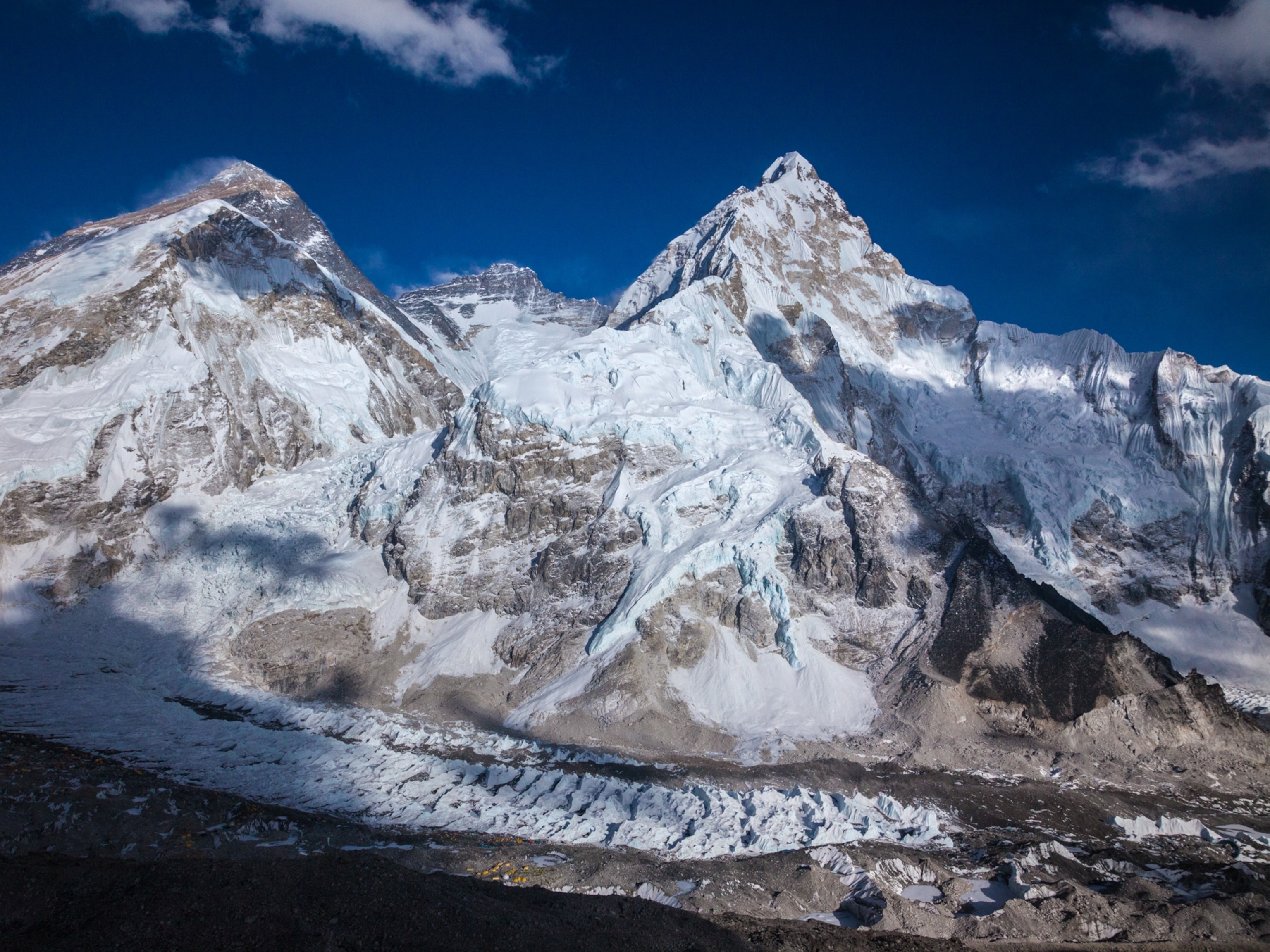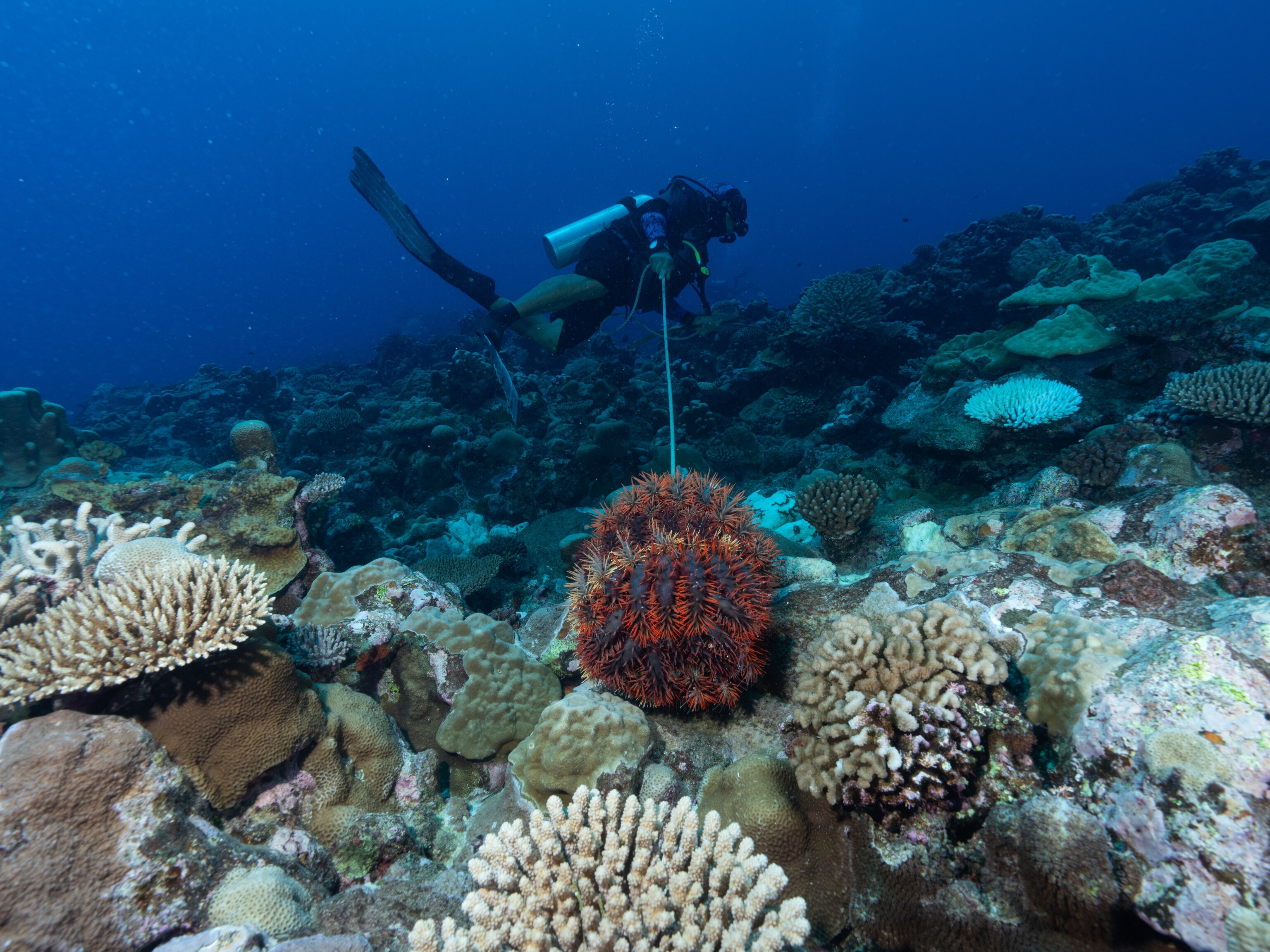How Rescuers Save Climbers on the World's Tallest Mountains
When disaster strikes in the Himalaya, this rescue team can be the difference between life and death.
Climbers train their entire lives to scale Mount Everest, but Chhirring Dhenduk Bhote seems born to do it. He's from a village in eastern Nepal that's nestled between Mount Kangchenjunga and Mount Makalu, the world's third and fifth highest mountain peaks, respectively.
Everest, which at 29,029 feet is the world's tallest mountain, sits just west of Mount Makalu, and it's one of the Himalayan peaks where Bhote has performed rescue operations under some of the most harrowing of conditions.
When climbers scaling the mountain face danger, they send a call to rescue organizations in the region. Climbing is extremely hazardous, and it's common for deaths to occur every year. It's so dangerous that many climbers buy special insurance before ascending.
(The world's tallest mountain? It might not be what you think.)
When Bhote and his fellow team of rescuers are pinged, they spring into action. Traveling via helicopter, they find those in danger. If they can't safely land their aircraft at the scene they deploy a technique called long line rescue. A long spool of rope unwinds and Bhote rappels down to the victims below. He secures them to the other end of the rope, whether they are conscious or not. Dangling dozens of feet below the helicopter, victim and rescuer are flown to the nearest emergency medical station.
It's a physically demanding, high-stress job. But Bhote is among the best in the region, having conducted 21 of the 35 long-line rescues performed in the Himalaya since 2008. Bhote trained in Switzerland to become a long-line rescuer, but he also credits a natural affinity for the mountains. And while he has had many successes, he and his team are not always able to reach distressed climbers in time to save their lives.
"When I pick up the dead body, my heart feels very cold, and I am very sad," Bhote said in a video produced by filmmaker DJ Clark. Many of his rescue missions are life-saving, but when they're not, Bhote feels an obligation to at least return the body to the climber's family.
High-Risk Adventure
Climbing Mount Everest is an extremely demanding task. Bhote should know—he's done it twice. But weather can change in a disastrous instant.
The Himalayan Database is devoted to tracking the number of deaths that have occurred on Everest since 1921. Six died in 2017 alone, but by far one of the deadliest years was 2014, when 17 people died, largely from an avalanche. Another avalanche in 2015, triggered by an earthquake, killed 15.
Avalanches are among the more common reasons people perish while climbing mountains like Everest, but causes of death and injury can be more broadly characterized by unpredictable disasters: collapse, falls, exposure, illness. Occasionally some disappear without a trace.
Challenging Assignment
For Clark, finding Bhote was a happy accident of circumstance. Last year, he was in Nepal to film elephant conservation efforts for National Geographic when a mutual connection put him in touch with Bhote. While Clark had met other long-line rescuers, Bhote struck him as the most impressive, both from his success record and from his passion.
- National Geographic Expeditions
To capture Bhote's rescue missions on camera, Clark first had to wait for someone in need of assistance to film. For Clark, who's based in Hong Kong, the logistics seemed insurmountable, so much of the footage of Bhote on rescue missions is shot from a camera strapped to his helmet or held by his teammates in the helicopter.
"He has a real passion for making Nepal a safe place for climbers," said Clark.
For the foreseeable future, Bhote plans to continue conducting rescue missions, and he and his team hope to open their own on-the-ground rescue station. Once they have more manpower, he said in Clark's video, they can "mobilize everywhere."












_4x3.jpg)